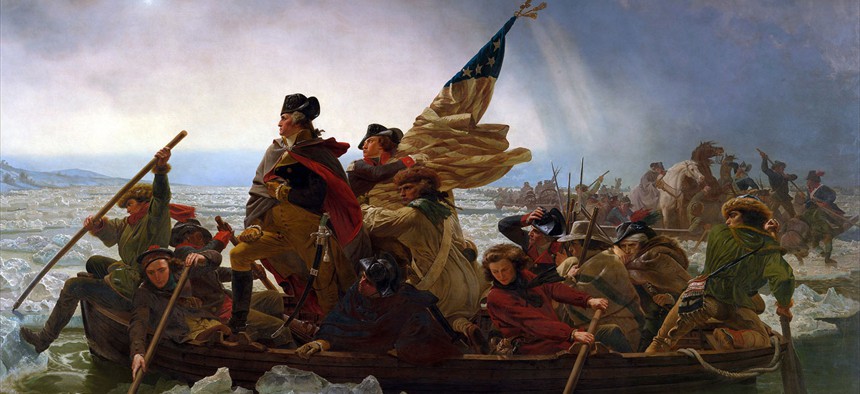
"Washington Crossing the Delaware" (1851), by Emanuel Leutze
Before He Was President, George Washington Tried to Drain an Actual Swamp
The “Father of our Country" failed too.
Reading a biography of George Washington one month shy of a Donald Trump presidency is rife with delicious ironies. In addition to his grace and military prowess, America’s first president was known for confining his stronger opinions to private letters rather than public outbursts, for his love of the theater, and for having hands so large that he had to wear custom-made gloves.
But there is perhaps no greater irony, given recent events, than Washington’s participation in Adventurers for Draining the Dismal Swamp, a group of 10 investors that in 1763 conspired to turn southeastern Virginia’s Great Dismal Swamp into profitable farmland.
Today, the Great Dismal Swamp spans southeastern Virginia and northeastern North Carolina, and is run by the US Fish & Wildlife Service. It hosts events like the New Year’s Owl Prowl and the annual Christmas Bird Count. But in Washington’s time, the swamp was more than 2,000 square miles of mostly unclaimed land, anchored by the five-square-mile Lake Drummond at its center. It was William Byrd II, a Virginia planter and founder of state capital Richmond, who during a 1728 land survey gave the swamp its name, describing it as “a miserable morass where nothing can inhabit.”
In 1763, the Adventurers—including Washington, who in the decade before the Revolutionary War was focused mainly on expanding his landholdings, participating in local government, and dealing with the fickleness of his tobacco crop—petitioned the General Assembly of Virginia to drain the swamp by building canals (er, having slaves build canals) with the goal of harvesting lumber during the draining and then farming the dry land afterwards. The General Assembly agreed to the proposal, but the ambitious businessmen still had to contend with the crown. As Ron Chernow writes in Washington: A Life:
[These] speculators hoped to bypass royal regulations that restricted grants of Crown lands to one thousand acres per individual. To circumvent this limit, they manufactured 138 bogus names when they submitted their land petition in Williamsburg.
The trick worked, and the Dismal Swamp Company was born. Washington helped put together a force of 60 slaves to commence the drainage project, but it was ultimately sidelined as the war got underway. He sold his shares in the company in 1795. While the first canal was eventually completed in 1805, the plans to drain the swamp had been dropped by the turn of the century.
America’s first president and its 45th may not share a political or military background—or be able to share gloves—but they do have some things in common. Both were launched into adulthood by their fathers’ prosperity, both made a profession of land speculation, both started real estate companies, and both bucked the “establishment.” Both are also preternaturally concerned with haberdashery—Trump’s presidential campaign essentially was a baseball cap, and Washington once demanded his officers add to their uniforms “a silver-laced hat of a fashionable size.” But most important, both Washington and Trump really suck at draining swamps.






